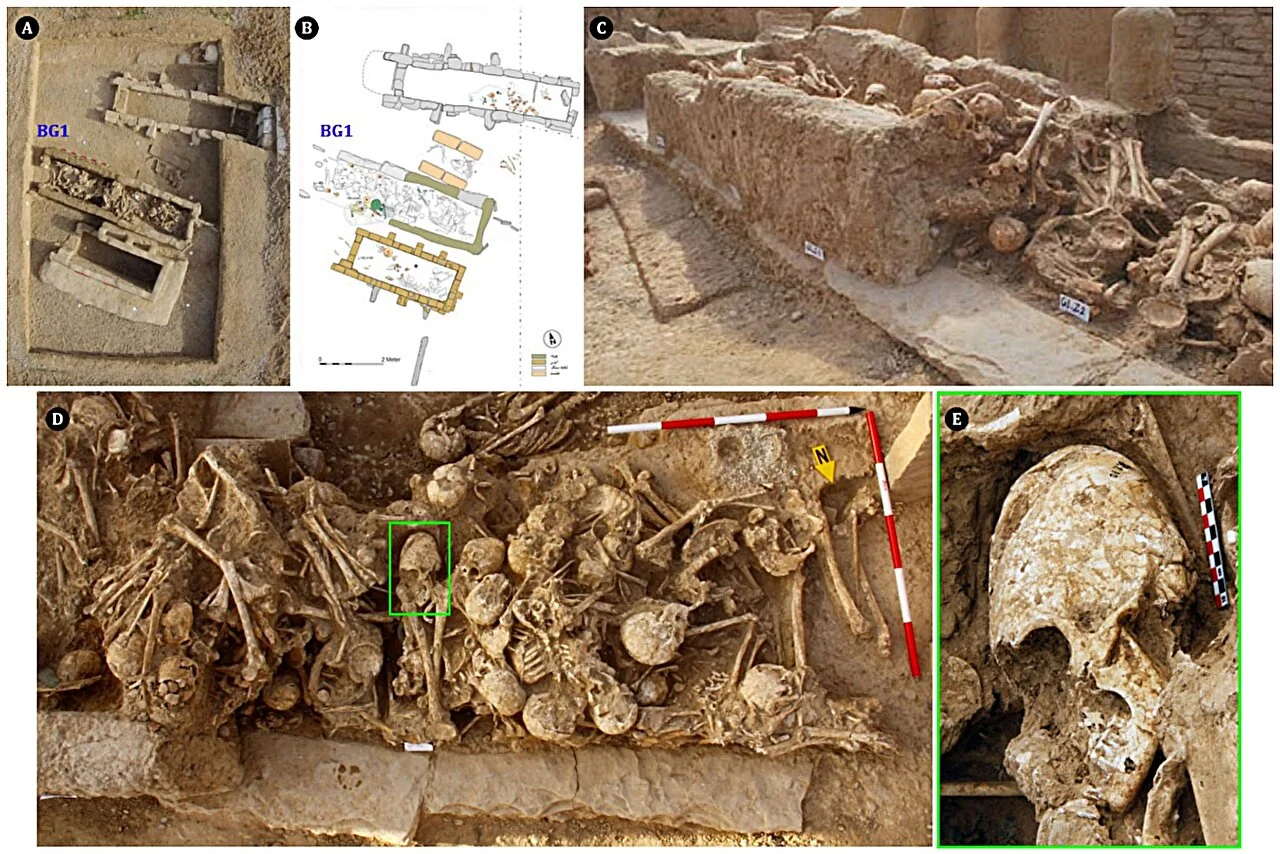Muhammad TuhinJune 11, 2025

The location of BG1 in Workshop B of the Chega Sofla cemetery and its rectangular structure (A and B). A view of the multiple-burial grave BG1 and the individuals buried within it (C). Western part of BG1 and location of BG1.12 (D); the burial of BG1.12 (E) (archive of Zohreh Prehistoric Project). Credit: International Journal of Osteoarchaeology (2025). DOI: 10.1002/oa.3415
In the heart of western Iran, where the winds sweep over the low hills of Ilam Province and the earth has kept its secrets for millennia, two archaeologists have unearthed a haunting relic of the distant past. At a sprawling ancient cemetery known as Chega Sofla, among bones long forgotten and tombs of brick worn by time, researchers discovered the skull of a young girl—delicately deformed and fatally fractured. Her story, buried for over six thousand years, is now being told for the first time.
A Skull in the Dust
For more than a decade, excavations at Chega Sofla have peeled back the layers of a prehistoric settlement, one grave at a time. Single burials, family plots, and communal graves whisper of customs lost to time. Among them, a peculiar pattern has emerged—some skulls, particularly those of women and girls, bear the unmistakable signs of cranial modification.
It was in this context that Dr. Mahdi Alirezazadeh and Dr. Hamed Vahdati Nasab, seasoned archaeologists and osteoarchaeologists with a deep understanding of Iran’s ancient cultures, uncovered a skull that stopped them in their tracks.
“She was young,” Dr. Alirezazadeh recalls. “No older than twenty. And her head had been shaped—deliberately, systematically—into a smooth, cone-like form.”
More:
https://www.sciencenewstoday.org/skull-of-a-young-girl-tells-a-haunting-story-from-6200-years-ago
 = new reply since forum marked as read
= new reply since forum marked as read
